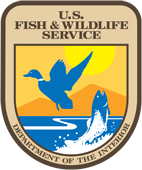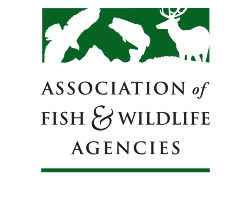Advancing k-12 conservation education through improved tools for educators exploring the public trust doctrine, North American Model, and related examples of wildlife management.
Strategic Priority
Capacity Building, Conservation Education, and Coordination of Conservation Policies - Conservation Education
Project Documents
Project Description
Maintaining support for Agencies' management of our fish and wildlife resources benefits when K-12 educators and students access quality materials demonstrating how and why conservation is achieved under the North American Model and upheld through the public trust doctrine. However, the discussion about public trust is incomplete if it does not articulate the role of the sustainable uses of wildlife under the “user-pay, public-benefit” system and why state and federal wildlife agencies promulgate associated management activities. Unfortunately, many formal and non-formal educators lack the resources – and in some cases, the knowledge – to effectively deliver these critical messages to the public. Conservation Leaders for Tomorrow (CLfT) has the experience and skills to communicate these core conservation principles through professional development programs effectively. CLfT is utilized by over half the state Agencies, the Fish and Wildlife Service, and the Bureau of Land Management as the leading program to communicate the role the consumptive uses of wildlife play in conservation. This proposal seeks to build from CLfT’s knowledge, partner with Project WILD, and produce a new and novel public curriculum that advances K-12 trainers and educators' understanding and support for these topics.
Project Facts
- Organization Name: Max McGraw Wildlife Foundation
- Organization Status: NGO
- State: Illinois
- Obligation: $36,900
- Start Date: 01-01-2020
- End Date: 12-31-2020
Results
- Objective: To create a stepwise set of curricula to enable educators to understand the key principles of wildlife conservation under the North American model and explore the user-pay public-benefit system of wildlife conservation. A series of products will be designed, including new materials, effective messaging that connects to the existing curriculum, and enhancements and reworking of the most proven activities used within Project WILD, making them publicly available to educators.
- Each developed piece will be a) shared and available to all 50 states, b) aligned to learning standards and consistent with current science pedagogy, and c) founded from effective messaging and activities formed from AFWA, CLfT, and recent social science research.
- Goal
- The development of “print ready” materials to assist classroom learning as it relates to the Role of the Public Trust Doctrine in Natural Resources Conservation, including a focus on the North American Model and Wildlife Conservation.
- Creation of materials that explore how wildlife conservation is achieved in North America through a “user-pay, public-benefit” system of regulated harvest and licensing, specifically focusing on state wildlife agencies' role.
- Provide supporting worksheets to assist educators with delivery.
- Reworking the popular “Oh Deer” curriculum from Project Wild to increase biological and practical accuracy, promote public trust, and diversify topical materials.
- Provide digital educational materials on a publicly available webpage within Project WILD.
- All activities listed above were completed on time and without difficulties. This includes the distribution of printed and digital material to all 50 states.
- A complete public free version of the curriculum can be found on the Project WILD Program Resources page under “North American Model.” A digital version of the curriculum is included in the report documents.


